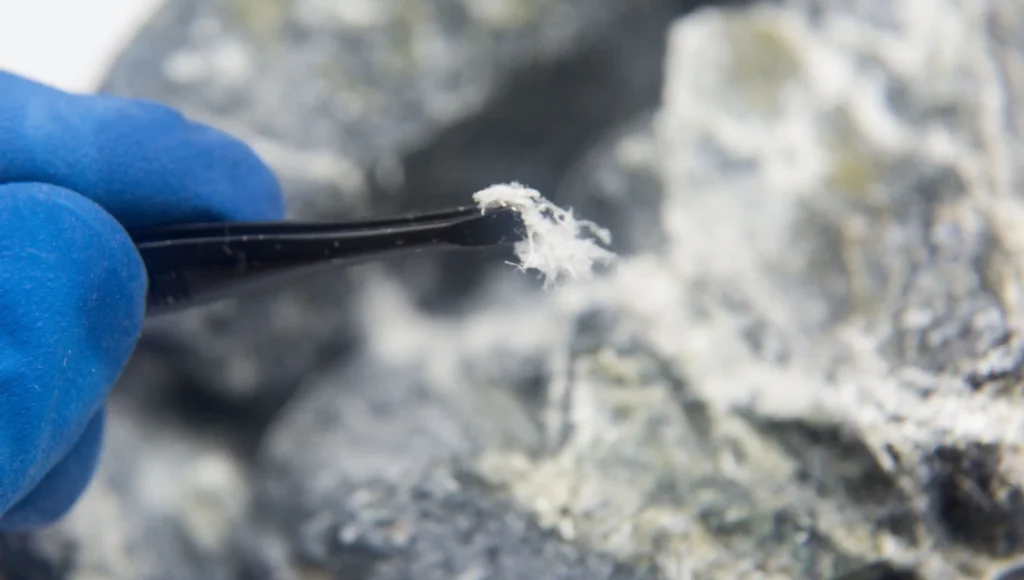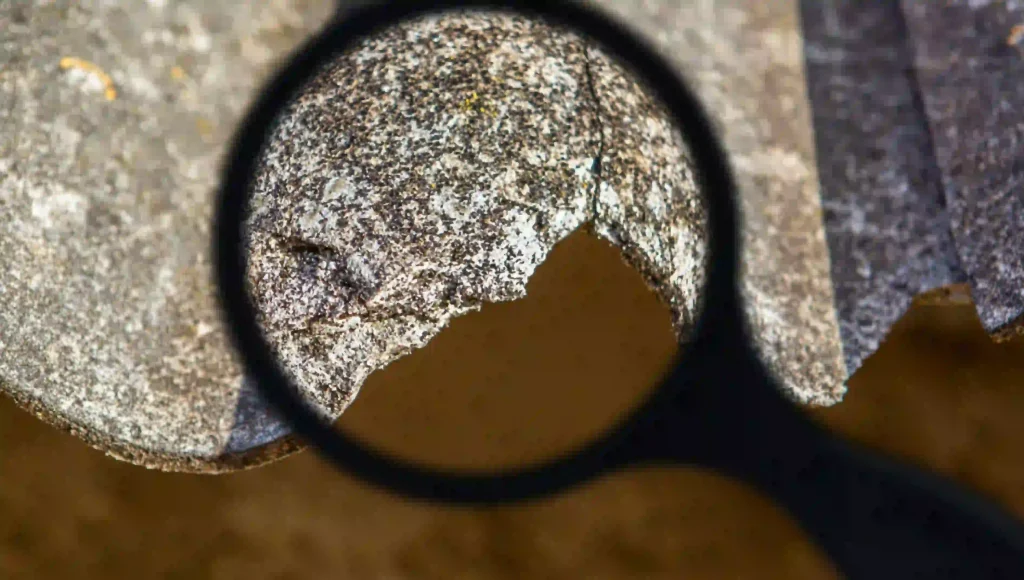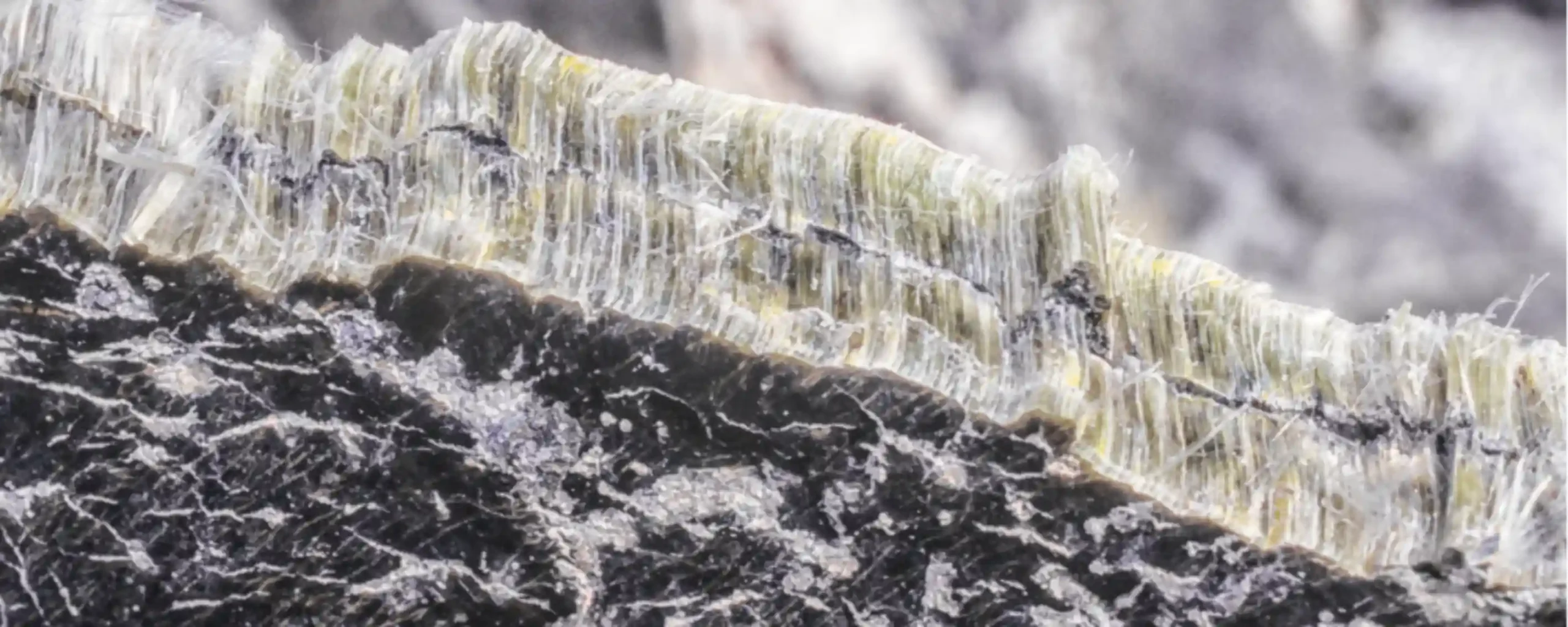Asbestos is a perfect material for construction because of its heat and fire resistance. However, if a tiny piece of asbestos gets into the air and is breathed in, they are very harmful to our body.
In this article, you will learn what asbestos is, whether your drywall has asbestos or not, and precautions to keep it safe.
What is Asbestos?

Asbestos is a term used to describe naturally occurring minerals that have long been used in construction due to specific properties. They comprise long, thin, fibrous minerals that are extremely strong and heat-resistant.
Key Asbestos Minerals:
| Mineral | Description | Common Uses |
| Chrysotile | Also known as “white asbestos”; the most common type. | Insulation, drywall, ceiling tiles. |
| Amosite | Also called “brown asbestos”; less common. | Pipe insulation, roofing materials. |
| Crocidolite | Known as “blue asbestos”; the most dangerous type. | Spray-on coatings, cement products. |
| Tremolite | Rare in commercial use but can be found as a contaminant. | Some insulation and talc products. |
What is Drywall?
Generally, drywalls are also referred to as gypsum boards or plasterboards in making walls and ceilings. Essentially, drywall material contains gypsum, a soft mineral wrapped in two layers of paper. Therefore, it is popular among builders due to ease during installation and ability to be painted over.
Drywall Components:
| Component | Description | Purpose |
| Gypsum | A soft mineral found in sedimentary rocks. | Provides the core material for the board. |
| Paper Sheets | Typically made from recycled paper. | Cover and protect the gypsum core. |
Asbestos in Drywall
Asbestos was incorporated in the drywalls due to its heat resistance and insulating nature. Here’s how asbestos made its way into drywall:
- Asbestos-Containing Joint Compound: It is the major material used for insulation of spaces between two adjacent sheets of drywall. It was added to some joint compounds to make them stronger and heat-resistant.
- Asbestos-Enhanced Drywall Panels: Sometimes, asbestos was added to the gypsum wallboard in order to improve the stability and fire resistance of the material.
Asbestos-Containing Products in Drywall
| Product | Description | Purpose |
| Joint Compound | The filler is used to seal joints between drywall panels. | Added fire resistance and strength. |
| Drywall Panels | Boards are used to construct walls and ceilings. | Occasionally enhanced with asbestos. |
Why is Asbestos Dangerous?
Inhaling asbestos fibers can cause a major health risk if they become airborne. These particles are tiny enough to enter the lungs deeply by inhalation, eventually leading to several diseases.
Methods to Identify Asbestos:
| Method | Description | Pros and Cons |
| Building Age | Check if the building is old. | Quick but not definitive. |
| Labels and Documents | Look for historical labels or documents about the materials. | Helpful if available. |
| Professional Testing | Hire a certified professional to test samples. | Most accurate but involves cost. |
- Check the Age of the Building: Houses built before the 1980s are most likely to have asbestos in their drywall.
- Look for Labels: If available, someone may check old labels or documents, and they can tell whether asbestos was used or not.
- Professional Testing: This can safely be said to be the most reliable, as it involves hiring the services of a certified individual to collect samples of the drywall and have them laboratory analysed.
What to Do if You Find Asbestos

If you discover that your drywall contains asbestos, it’s crucial to handle the situation correctly:
Steps to Take When Asbestos is Found
| Step | Description | Why It Matters |
| Do Not Disturb | Avoid disturbing the material. | Prevents the release of harmful fibers. |
| Hire Professionals | Use trained experts for removal or repair. | Ensures safety and proper handling. |
| Follow Regulations | Adhere to local laws and guidelines. | Avoids legal issues and ensures safety. |
- Do Not Disturb: They also have asbestos-containing material. Where it is left undisturbed, it will not present any danger at all if it is in good condition.
- Hire Professionals: When doing any work that involves the removal or repair of any material containing asbestos, always engage personnel who have adequate knowledge of the handling of asbestos. They have the tools and resources that are necessary to handle the material with no compromise to the safety of the people around them.
- Follow Regulations: Check and ensure that every regulation and guideline relating to the removal and disposal of asbestos are met.
Alternatives to Asbestos
Today, we use safer materials instead of asbestos. Some common alternatives include:
| Material | Description | Common Uses |
| Fiberglass | Insulation is made from fine glass fibers. | Insulation in walls and ceilings. |
| Mineral Wool | Insulation is made from rock or slag. | Fire-resistant insulation. |
| Cellulose | Insulation is made from recycled paper. | Insulation in attics and walls. |
- Fiberglass: A type of covering material manufactured from glass filaments. It is safe when the installations are done perfectly.
- Mineral Wool: This is also called rock wool, and it serves the purpose of insulation and fire protection.
- Cellulose: It is a paper product made from recycled paper that is used for insulation purposes and does not contain any asbestos.
Conclusion
Most importantly, one needs to know about asbestos in drywall to avoid possible harm to you and your house. Asbestos is a substance that was used earlier because of its characteristic fire resistance and strength, even though we are aware that it is really harmful to our health. If one learns how to identify and control this substance, he or she will be better placed in protecting his or her family and hence providing safe shelter to them.
Just remember that if you have any idea that there is asbestos in your home, then consult with experts. Asbestos poses a great threat when handled without proper knowledge and precautions; therefore, the need to take necessary measures so as to avoid its dangers among the people.

